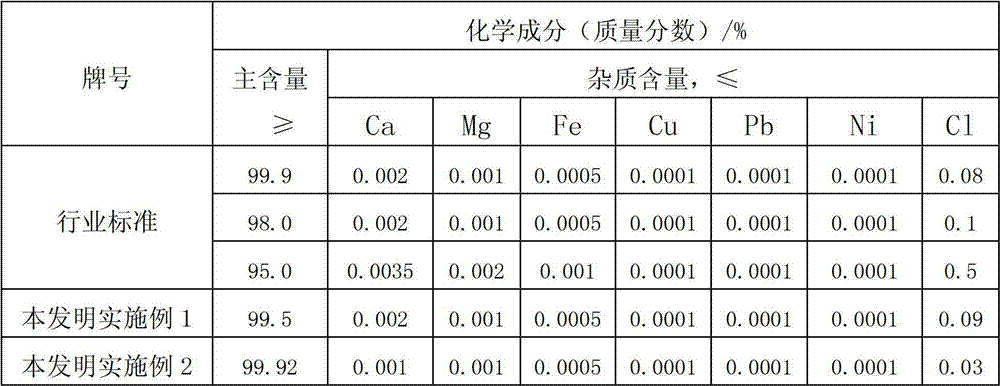Method for producing lithium phosphate by using lithium-containing waste liquid
A technology of lithium phosphate and waste liquid, applied in chemical instruments and methods, phosphorus compounds, inorganic chemistry, etc., can solve the problems of land occupation, environmental pollution, etc., and achieve the effects of saving production costs, high conversion rate, and full utilization of lithium resources
- Summary
- Abstract
- Description
- Claims
- Application Information
AI Technical Summary
Problems solved by technology
Method used
Image
Examples
Embodiment 1
[0016] The method for producing lithium phosphate from the lithium-containing waste liquid of this embodiment specifically includes the following steps: adding 23.33 g of 85% industrial phosphoric acid into 1 L of lithium-containing waste liquid (the lithium content is 4.25 g / l), at a temperature of 70° C. React for 5 hours, filter after the reaction is complete, wash the filter cake and then dry it at 100°C to obtain 22.5g of lithium phosphate finished product. Add lime to the filtrate and washing water to adjust the pH value of the solution to 7 before discharge. The lithium-containing waste liquid of the present embodiment is a by-product mother liquor in the industrial production of lithium sulfate.
Embodiment 2
[0018] The method for producing lithium phosphate from lithium-containing waste liquid in this embodiment specifically includes the following steps: adding 25 g of 85% industrial phosphoric acid into 1 L of lithium-containing waste liquid (lithium content is 4.25 g / l), and reacting at 90° C. for 2 h , filter after the reaction is complete, wash the filter cake and then dry it at 120°C to obtain 23g of lithium phosphate finished product. The filtrate and washing water are added with lime to adjust the pH value of the solution to 8, and then discharged after reaching the standard. The lithium-containing waste liquid in this embodiment is the by-product mother liquor in the industrial production of lithium fluoride.
[0019] Adopt method of the present invention to make lithium phosphate product quality and industry standard YS / T637-2007 contrast as follows:
[0020]
PUM
 Login to View More
Login to View More Abstract
Description
Claims
Application Information
 Login to View More
Login to View More - R&D
- Intellectual Property
- Life Sciences
- Materials
- Tech Scout
- Unparalleled Data Quality
- Higher Quality Content
- 60% Fewer Hallucinations
Browse by: Latest US Patents, China's latest patents, Technical Efficacy Thesaurus, Application Domain, Technology Topic, Popular Technical Reports.
© 2025 PatSnap. All rights reserved.Legal|Privacy policy|Modern Slavery Act Transparency Statement|Sitemap|About US| Contact US: help@patsnap.com

